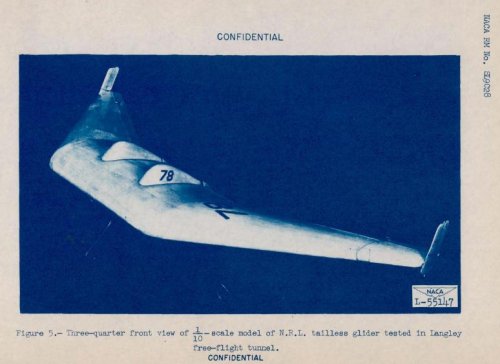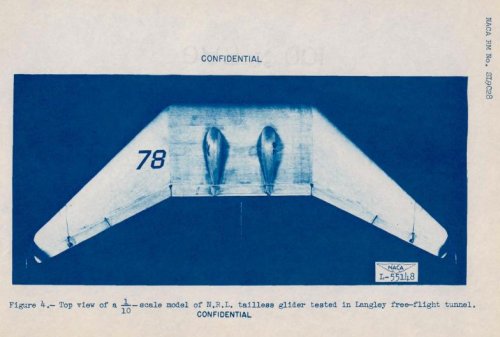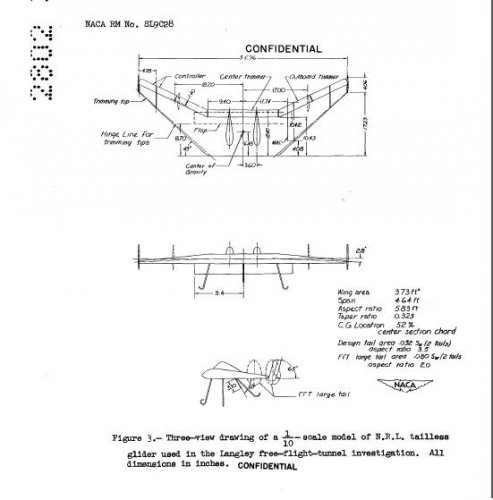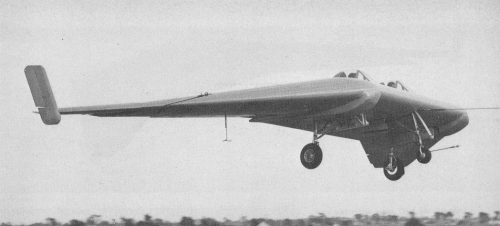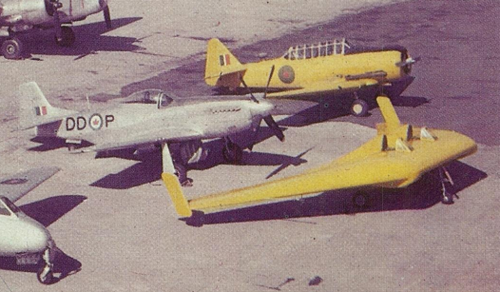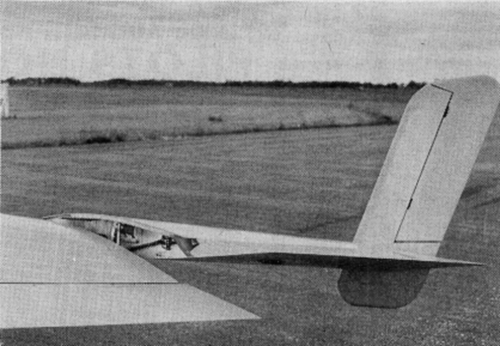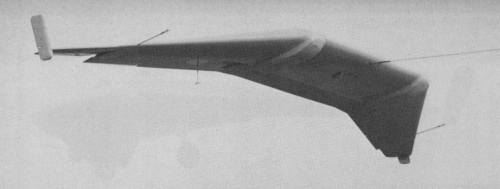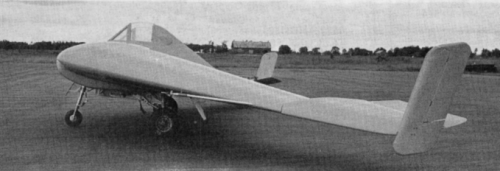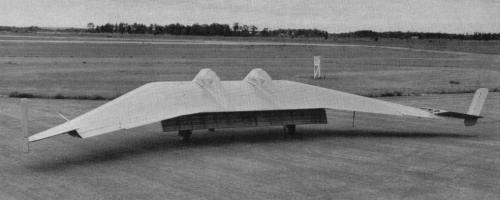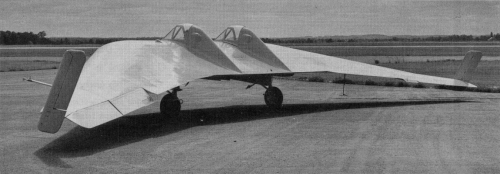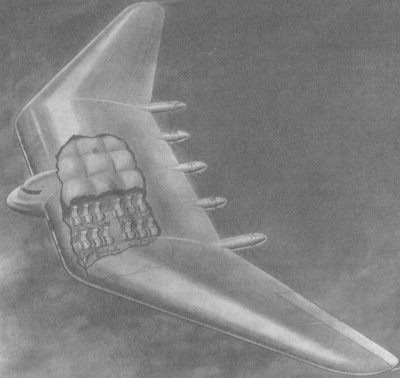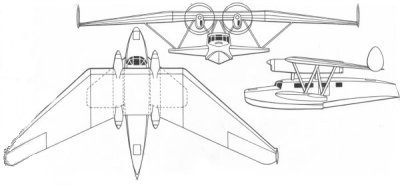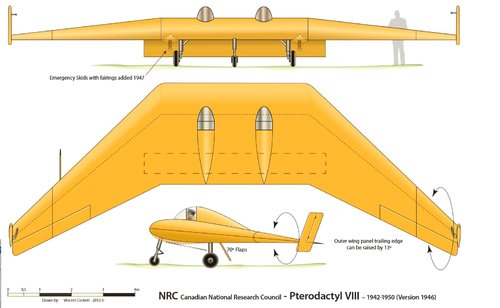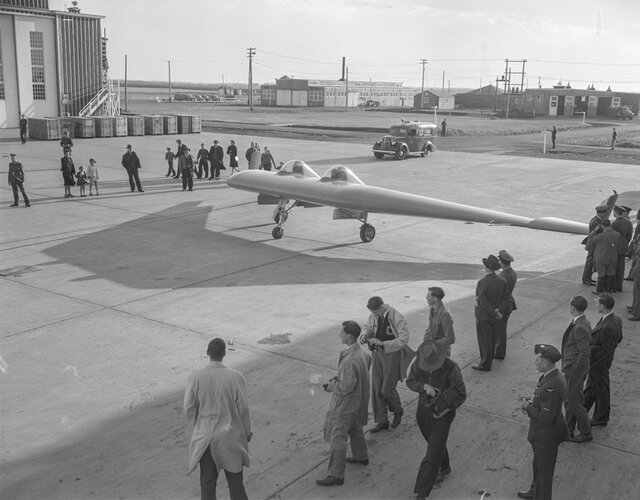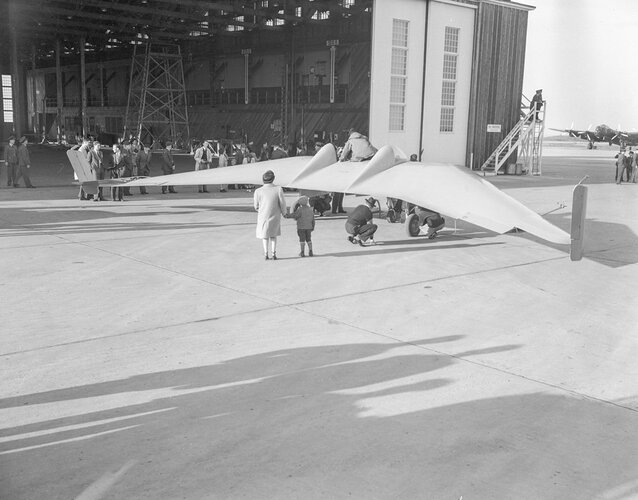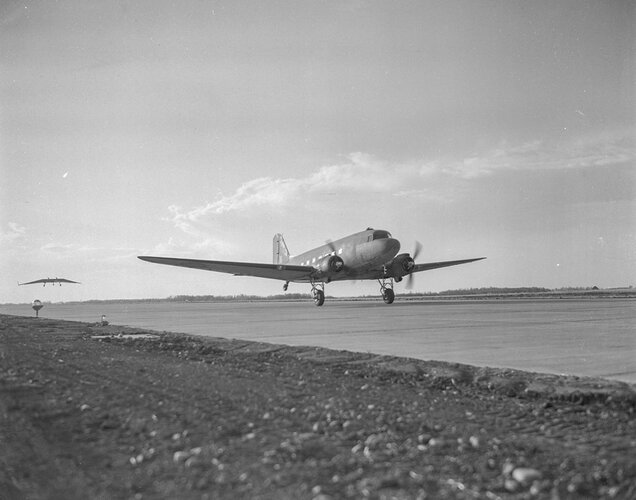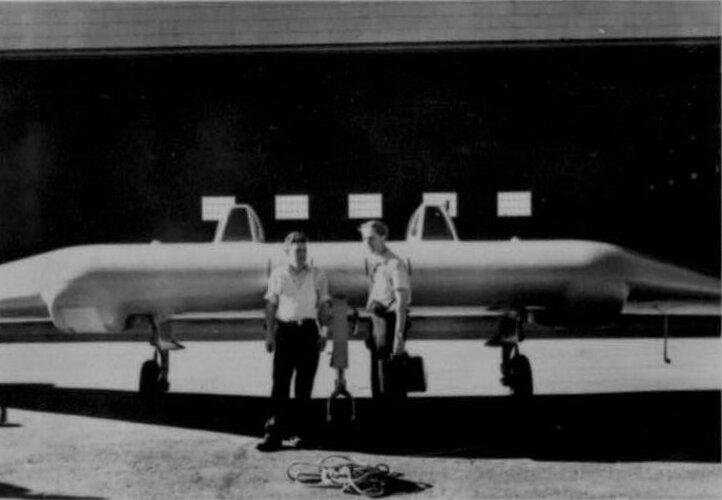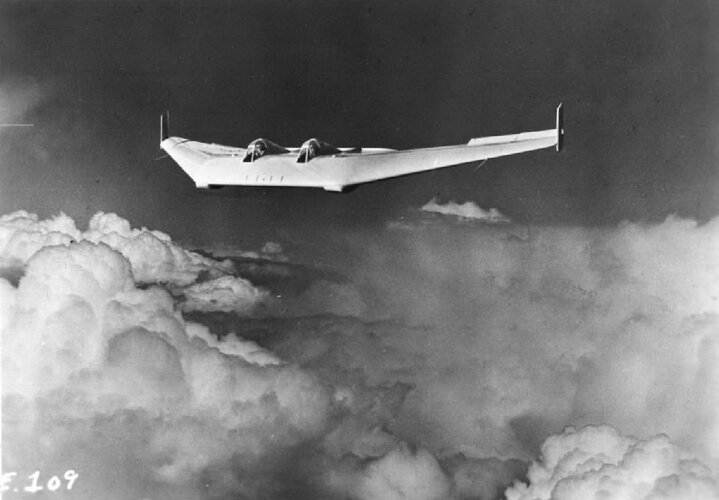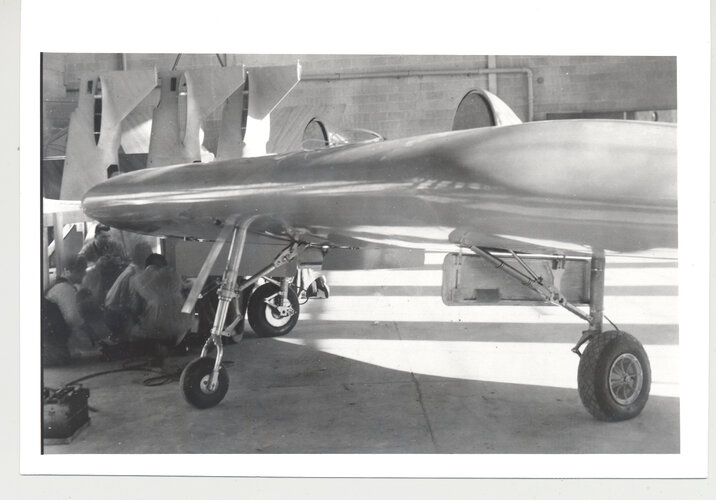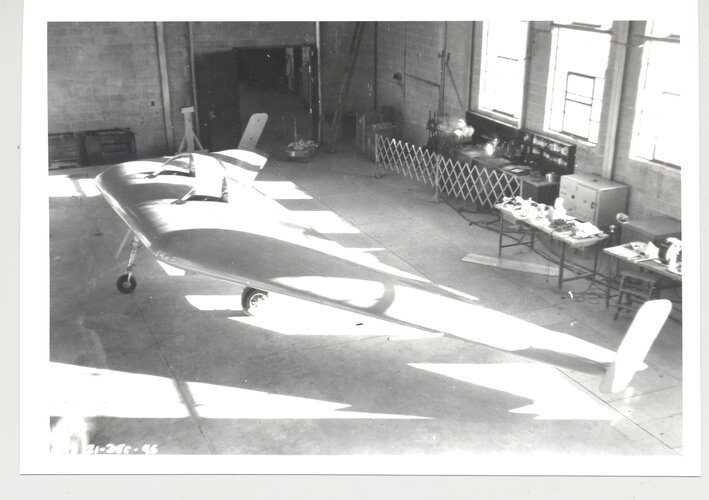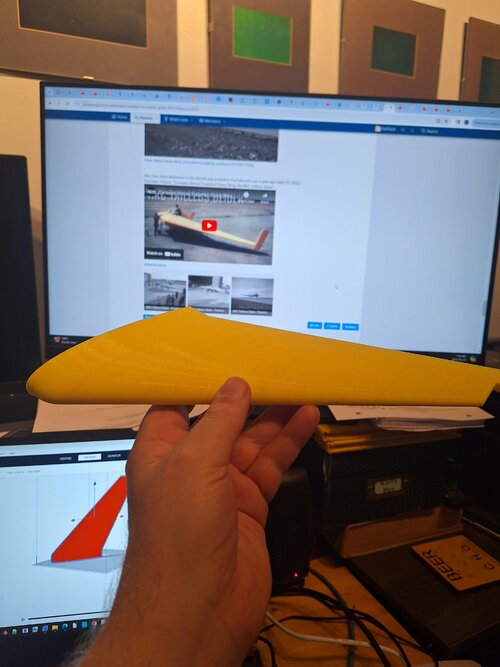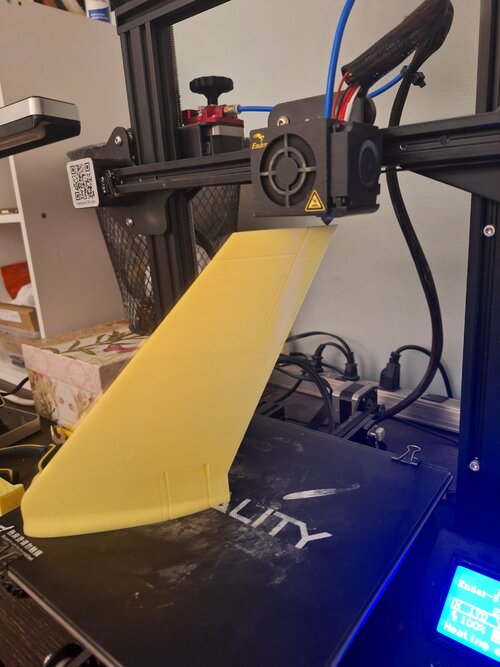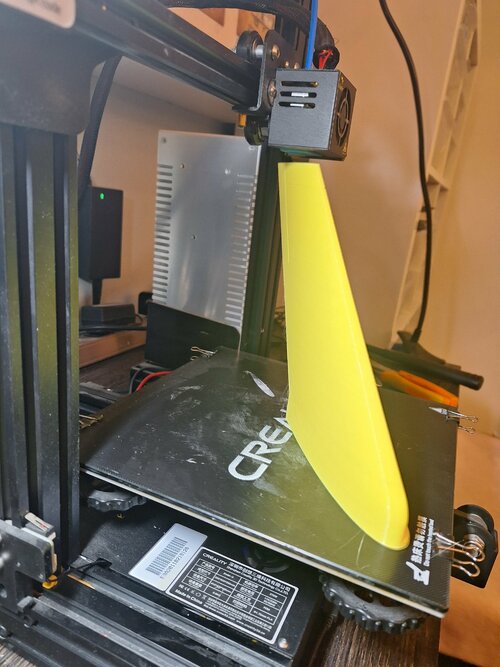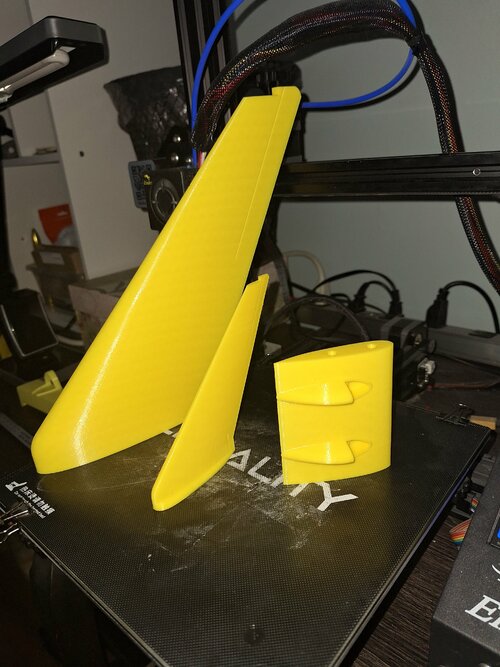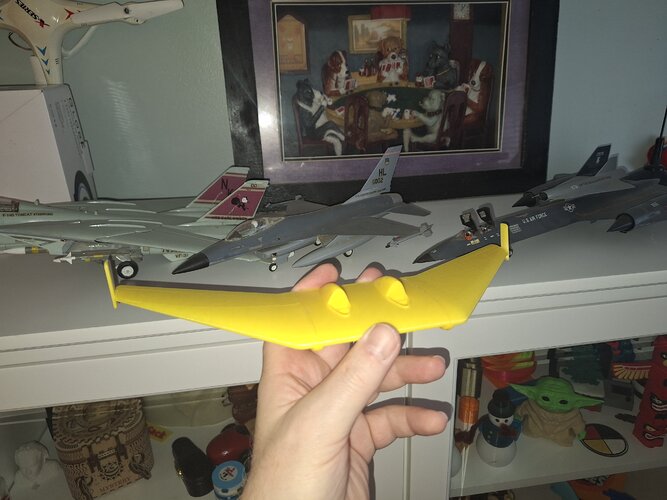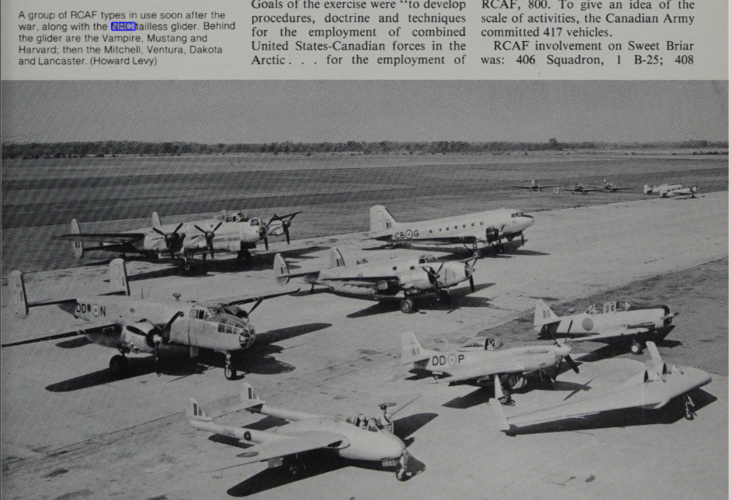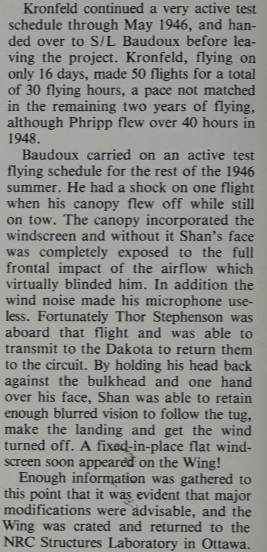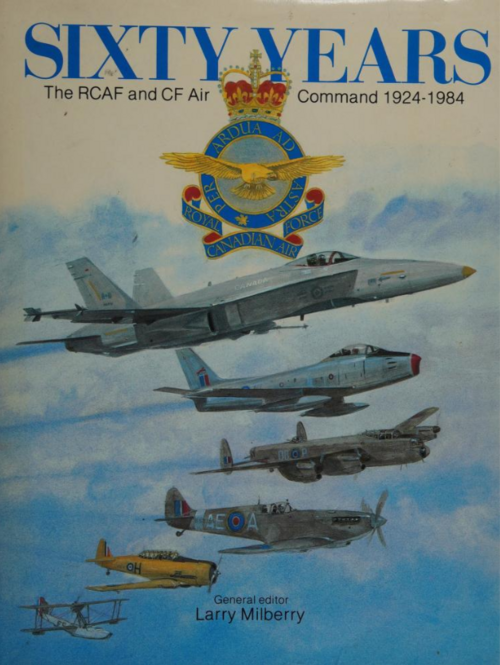Okay, here's some more, from the 'Aeroplane' article...
The project was originally proposed by Professor G.T.R.Hill, of Pterodactyl fame, and Hill made the preliminary studies. Detail design was by NRC staff, under the leadership of G.S.Levy and Thor Stephenson. Professor Hill was British Scientific Liason Officer to the NRC at the time.
The aircraft was originally to be a 1/3 scale powered model, but evolved into a full-size glider.
Construction was of wood, but the wing surface was covered in a laminated plastic layer, to give a smooth surface.
The wing was fitted with rotating tip sections, for trimming purposes, and tip mounted fins and rudders. Two sets were constructed, one with a symmetrical section, the other with a cambered section. Control was via elevons, and split flaps were fitted, hydraulically operated. The tricycle undercarriage was retractable and fitted with brakes.
The glider was first flown by the famous Austrian sailplane pilot, Robert Kronfeld in the summer of 1946. After 30 hours flying, the aircraft was modified; the one piece canopies were replaced with fixed windscreens and sliding canopies, the main wheels were moved aft, to correct the centre of gravity, and retactable skids, to prevent a nose over during a wheels-up landing, were fitted in bulges under the wing leading edge.
Flying behaviour was considered good, although there were problems with flow separation around the separate canopies.
The major problem was that only 20% of a flight was considered useful testing time, along with the fact that a tug and crew were also needed.
After the test program ended, the glider was abandoned in the open, deteriorating until finally broken up in the mid 1950s.
Some more images...
cheers,
Robin.

